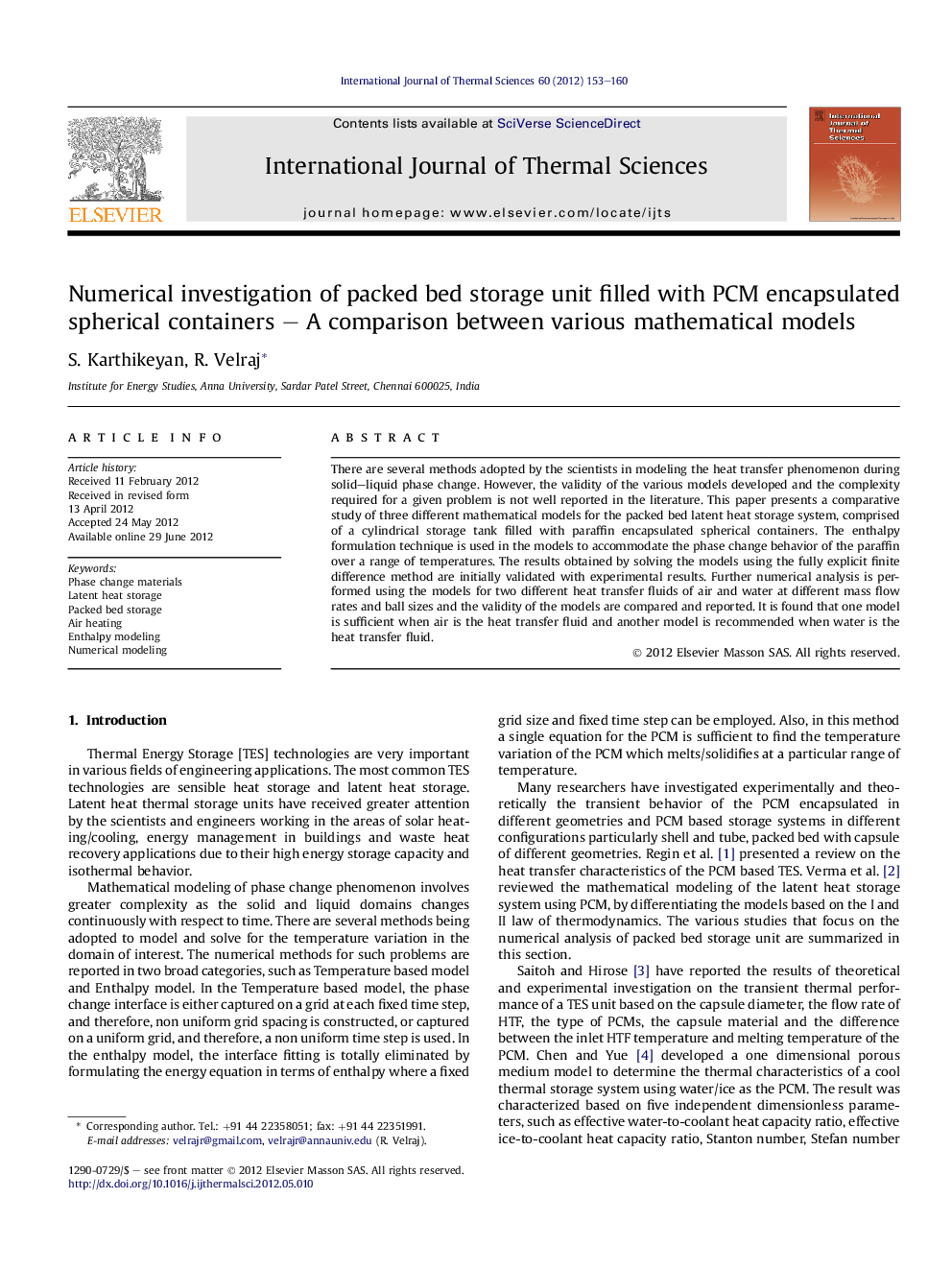| Article ID | Journal | Published Year | Pages | File Type |
|---|---|---|---|---|
| 668544 | International Journal of Thermal Sciences | 2012 | 8 Pages |
There are several methods adopted by the scientists in modeling the heat transfer phenomenon during solid–liquid phase change. However, the validity of the various models developed and the complexity required for a given problem is not well reported in the literature. This paper presents a comparative study of three different mathematical models for the packed bed latent heat storage system, comprised of a cylindrical storage tank filled with paraffin encapsulated spherical containers. The enthalpy formulation technique is used in the models to accommodate the phase change behavior of the paraffin over a range of temperatures. The results obtained by solving the models using the fully explicit finite difference method are initially validated with experimental results. Further numerical analysis is performed using the models for two different heat transfer fluids of air and water at different mass flow rates and ball sizes and the validity of the models are compared and reported. It is found that one model is sufficient when air is the heat transfer fluid and another model is recommended when water is the heat transfer fluid.
► A comparison of the performance of 3 models is made for packed bed LHS system. ► Model 1 and 2 are lumped model and model 3 considers thermal gradient inside the PCM. ► The additional axial conduction effect considered in model 2 has negligible effect. ► Model 3 that considers internal conductive resistance offer good results for any HTF. ► The model 1 is sufficient in order to reduce the processor time when air is the HTF.
